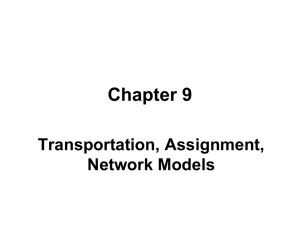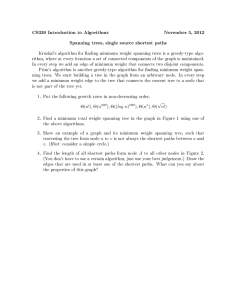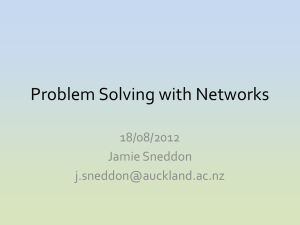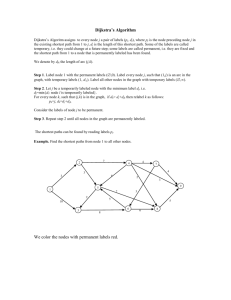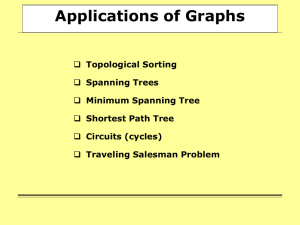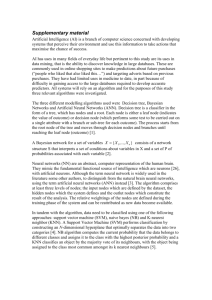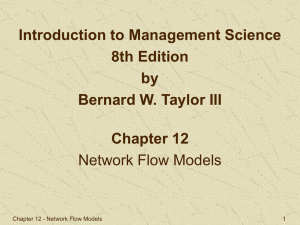Network Flow Models: Shortest Route, Spanning Tree, Max Flow
advertisement
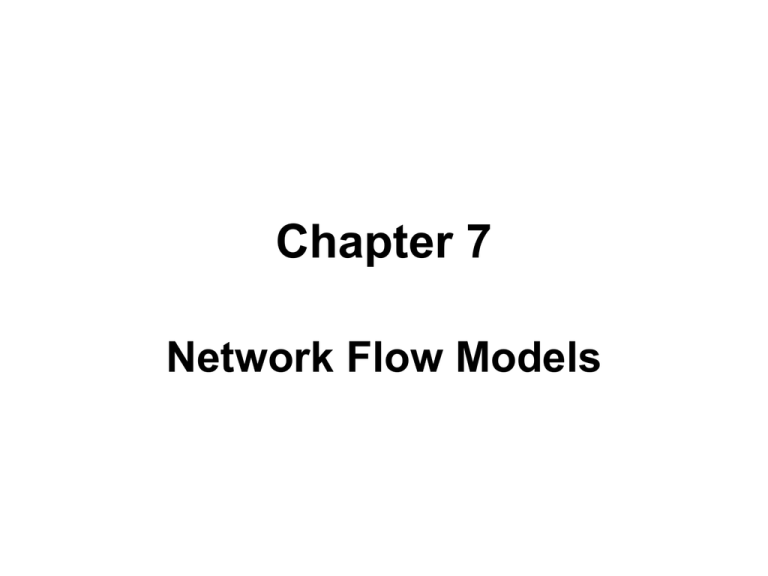
Chapter 7 Network Flow Models Shortest Route Problem • Given distances between nodes, find the shortest route between any pair of nodes. Example: p.282 (291) Solution Methods • Dijkstra algorithm: – Introduced in book. – Not required for this course • Using QM: – Required for this course – Data input format - Discussion • What if the ‘cost’, instead of ‘distance’, between two nodes are given, and we want to find the ‘lowest-cost route’ from a starting node to a destination node? • What if the cost from a to b is different from the cost from b to a? (QM does not handle this situation.) Minimal Spanning Tree Problem • Given costs (distances) between nodes, find a network (actually a “tree”) that covers all the nodes with minimum total cost. • Applications: Example: p.290 (299) Solution Method: Using QM. Shortest Route vs. Minimal Spanning • The minimal spanning tree problem is to identify a set of connected arcs that cover all nodes. • The shortest route problem is to identify a route from a particular node to another, which typically does not pass through every node. Maximal Flow Problem • Given flow-capacities between nodes, find the maximum amount of flows that can go from the origin node to the destination node through the network. • Applications: Example: p.294 (303) Solution Method: Using QM. Network Flow Problem Solving • Given a problem, we need to tell what ‘problem’ it is (shortest route, minimal spanning tree, or maximal flow); then use the corresponding module in QM to solve it.
